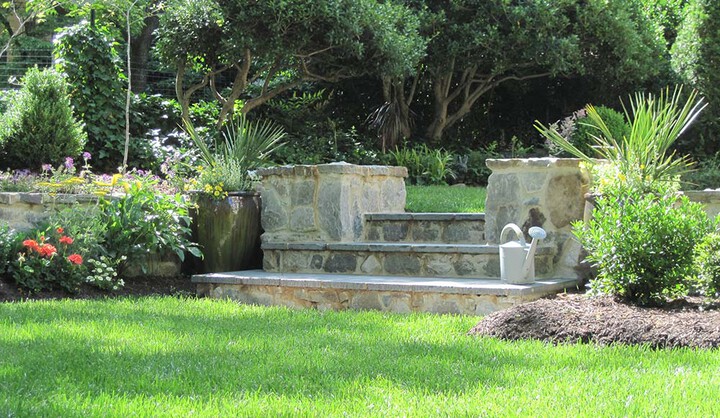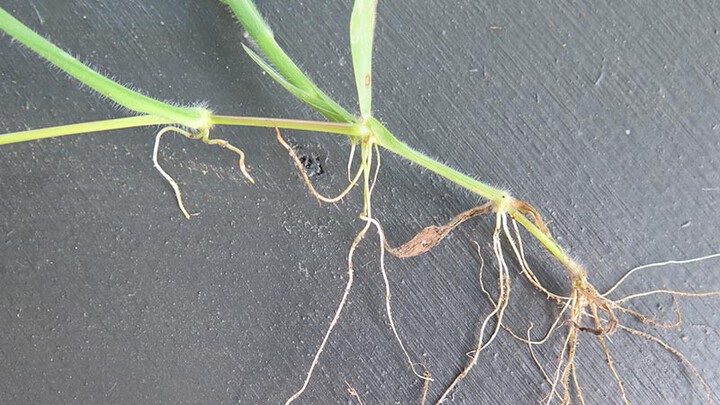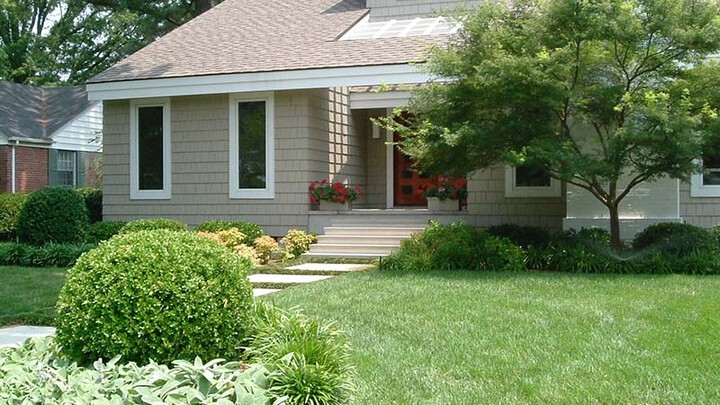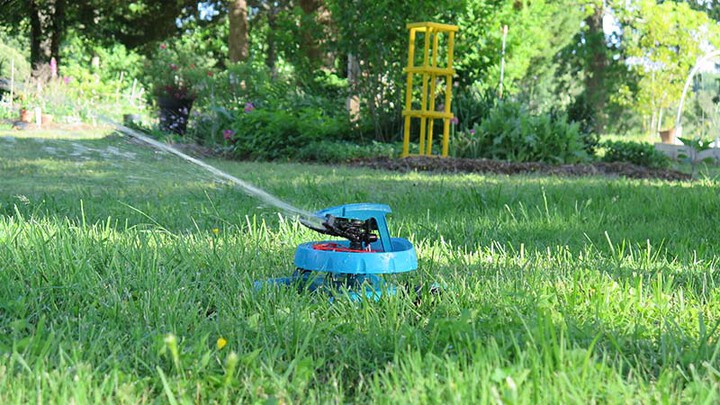
Ensure your lawn has every advantage for success by choosing the right grass for your region. Grow a type of grass that naturally flourishes in your climate and conditions. Turf grasses, those suitable for lawns, are divided into two general categories, warm-season and cool-season. If you live in the southern half of the United States, most of the grasses you see are warm-season.
What Are Warm-Season Grasses?
Warm-season grasses are turf types that thrive when temperatures are over 75 degrees. In the south, southeast, and southwest, where summers are long and average temperatures are high, warm-season grasses are the best.
In the fall and winter, warm-season grasses become dormant. They turn a tawny brown when temperatures begin dropping, but they do not die. These grasses turn green again in the spring when the weather warms up. If summers are especially hot and dry, warm-season grasses may also go through a period of summer dormancy. However, rain or regular watering, will revive them.

Throughout the growing season, a Gilmour Flexogen hose and Pattern Master Circular Sprinkler will help take care of your warm-season lawn when rainfall is not sufficient. The circular sprinkler is easy to adjust. No matter the shape of your lawn, it helps you water only the dry areas of grass without watering sidewalks and driveways.
Types of Warm Season Grasses

· Zoysia grass
Zoysia is a popular heat- and drought-tolerant grass with tufty green foliage. It grows best in sun but tolerates light shade. Zoysia lawns are dense and the grass crowds out weeds. It is among the most durable warm-season grasses, resisting wear and tear. Zoysia lawns are usually established from sprigs (often called plugs) or with rolls of sod. The grass spreads by runners, or stolons, which are horizontal stems that take root along their length.

This heat-loving grass waits for warm weather in late spring before turning green. It does not tolerate low temperatures and turns brown early in the fall. Zoysia lawns are susceptible to a build-up of thatch, which is a layer of dead runners, stems, and roots just above the surface of the soil. Over-fertilizing is a common cause of thatch in Zoysia lawns. To control thatch, rent a de-thatching machine or a core aerator. Grub worms can also be a problem. Grubs are the larval form of various beetles, and they eat the roots of grass plants. Warm-season grass types, including Zoysia, are more susceptible to grub damage than cool-season lawns.
· Bermuda grass
This hard-working grass is sometimes known as the “sports turf of the south”. It is a common lawn for parks, golf courses, and sports fields. It is well-adapted to many soil types. Bermuda grass thrives in hot weather. It is native to tropical and subtropical climates where rainfall is plentiful. Therefore, it will become dormant in a drought. Nevertheless, Bermuda grass turns green again when watered.
Bermuda grass spreads by vigorous stolons and rhizomes (underground stems) and can quickly invade flower beds. When weeding, look for grass shoots and dig them out. Although you cannot control all Bermuda grass in your yard, metal edging around a flower bed will substantially slow it down.
· St. Augustine grass

Gardeners in coastal areas of the south are most familiar with St. Augustine grass, a tough and adaptable turf well-suited to heat. St. Augustine grass prefers moist, sandy soils and grows well in areas with salt air. It is among the best-performing warm-season grasses for shady spots, but becomes thin in dense shade. In the fall, St. Augustine grass stays green longer than Bermuda grass. It spreads by stolons and is most frequently grown from plugs or laid down as sod.
St. Augustine grass needs little care in areas with 20 inches or more of rainfall annually. You’ll need to water more frequently to keep your St. Augustine lawn dense, green, and free of weeds in areas where rainfall is less plentiful. Chinch bugs and grub worms can be a problem. Chinch bugs eat grass stems at the base of the plants while grubs eat the roots. Good watering, mowing and fertilizing will help prevent both pests.
· Buffalo grass
Buffalo grass once fed great herds of bison on the Great Plains. Today, it is better known as a hardy, drought-tolerant turf grass, tough enough for cold conditions but best in hot environments. It can be established from seed, plugs, or sod and should be planted in sunny places. It is an especially low-maintenance turf that needs less mowing than other warm-season lawns.
In hot, dry summers, buffalo grass may turn brown, but it turns green again when rainy weather returns. Overwatering or fertilizing in dormant periods will simply encourage weeds. Buffalo grass is recommended for slopes and terraces where water drains quickly. Clay soils and dry sites are also ideal for drought-tolerant buffalo grass.
· Centipede grass
This heat-tolerant grass grows well in sandy soils and thrives in the sunny regions of the southeast. It tolerates light shade, but grows best in full sun. Centipede grass spreads by stolons and can be grown from seed, sprigs, or sod. It grows very slowly and does not require frequent mowing. Centipede grass has a shallow root system and will need more watering during dry spells.
Although Centipede grass is more cold-tolerant than St. Augustine, it will die if exposed to temperatures below 5 degrees for a long period of time.

Gardeners who move to warm southern areas from the north often wish to bring their favorite cold-climate turf types, but bluegrass and other cold-season grasses struggle in the south. Warm-season grasses are adapted to both the warm and humid or warm and arid climates of the south and southwest.